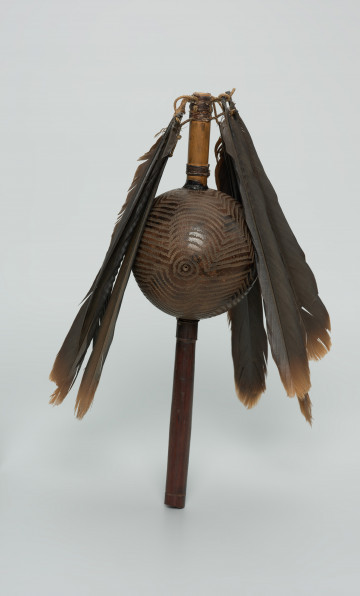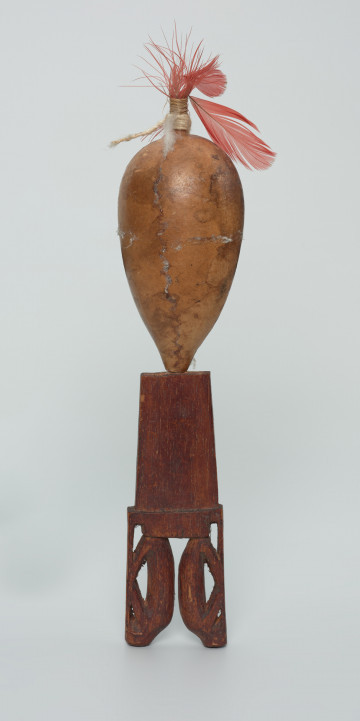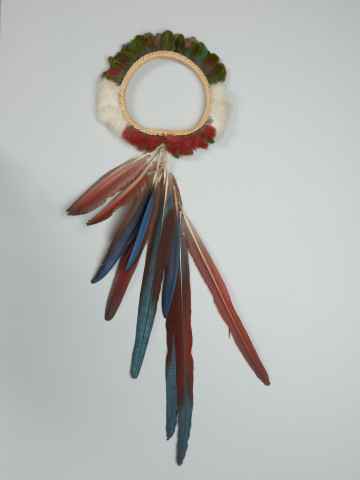
Shaman's maraca, rattle
około 1990 — 2000
National Museum in Szczecin
Part of the collection: Crafts of the Amazon Indians
The presented set of Hiwi Indian objects was used to prepare and consume yopo (Anadenanthera peregrina), a psychoactive substance used by men and shamans, among others, during healing seances. Yopera consists of a wooden tray and pestle for crushing yopo, a Y-shaped bone tube for inhaling the substance, and a wooden container covered with a banana leaf for storing it. Yopo is a plant well known in South America and the Caribbean. Archaeological studies show that its seeds have been used for thousands of years. The earliest evidence of yopo use comes from pipes made from puma bones dating to 2130 BC, discovered at Inca Cueva, an archaeological site in north-western Humahuaca on the border of Jujuy province in Argentina. Trays and tubes similar to the yopera set were used somewhat later. Radiocarbon studies of material found during archaeological excavations carried out on the central coast of Peru have established that they date back to 1200 BC, suggesting that yopo blowing is a more recent method. The Hiwi Indians believe that diseases have a magical basis. They are often thought to be the consequences of black magic or the breaking of taboos. Evil spirits and hostile shamans also cause them. In preparation for a healing séance, a Hiwi shaman puts himself into a trance with the help of the hallucinogenic substance yopo, dancing and singing. Dried and powdered yopo seeds are usually blown into his nostrils by another person using a tube. Blowing is more efficient, allows more substance to enter the body, and is less irritating. Yopo increases and prolongs the visions of the shaman, who, among other things, contacts the helping spirits málike and málikai during healing.
Katarzyna Findlik-Gawron
Other names
yopera
Author / creator
Dimensions
cały obiekt:
Object type
ritual set
Creation time / dating
Creation / finding place
Identification number
Location / status

około 1990 — 2000
National Museum in Szczecin

około 1987
National Museum in Szczecin

około 1990 — 2000
National Museum in Szczecin
DISCOVER this TOPIC
Museum of King Jan III's Palace at Wilanów
DISCOVER this PATH
Educational path